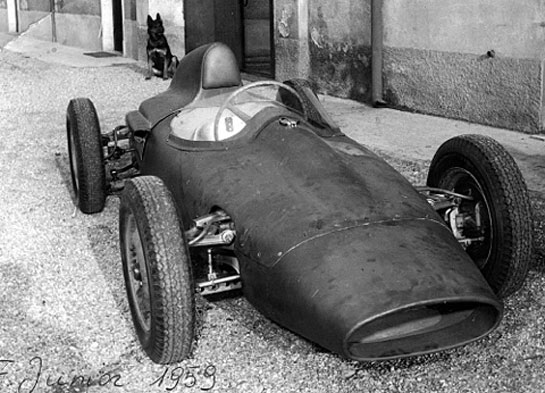
Moretti Branca under construction as Buscate. One of several original photos supplied by Mr. Branca in 2009
By Ean McDowell
In Part I, Ean McDowell interviewed Aquilino Branca who told him how he had created Championship winning 750cc race cars in the mid 1950s and how, in 1958, a new rear engine Formula Junior car was created. In Part 2, McDowell describes the mechanical aspects of the three Moretti Branca Formula cars.
In the initial discussions leading up to the birth of Formula Junior there was consensus only on the fundamental principle that it should provide low cost racing. There was no agreement at first on how this would be achieved.
Count Johnny Lurani’s proposal that would eventually be adopted, was that cars built for racing under the formula would be derived from a touring car recognized by the FIA of which 1000 units had been produced in 12 consecutive months. He initially proposed that the front suspension and brakes would come from the same car that sourced the engine although in the final adoption of the regulations there was no mention of suspension.
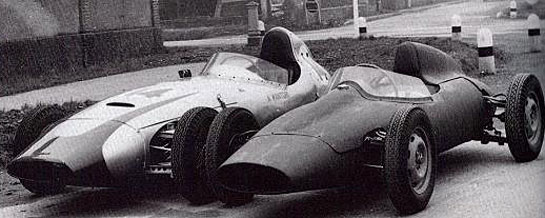
Branca first made a front engined F Jr, at left, next to the first of the rear enigned cars, now owned by Ean McDowell. Photo courtesy Stu Schaller.
Certainly in 1958 when racing commenced, most cars used a Fiat 1100 engine and most derived some or all of their suspension from the Fiat. Most had a live rear axle. On #2.18 Aquilino Branca used the upper front wishbones of the Fiat 1100 as the top arms for both front and rear with camber and caster adjustment similar to the Fiat road cars by shims. His master stroke was the use of a rectangular section lower arm in both cases that pivoted immediately inside the chassis and using the principle of a lever or rocker arm with springing almost at the centre line of the car. The unsprung weight was reduced and the coil springs were taken out of the air stream in a manner “rediscovered” in the 1970’s and now universally adopted in Formula 1.
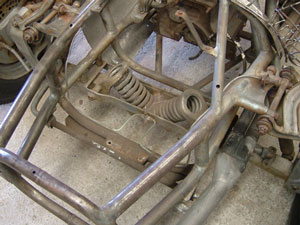
As found photo: The totally original rear end of #2.18 prior to restoration. The gearbox has been removed. The inboard springs and pivoted lower members can be seen. Fiat upper wishbones were mounted to provide rear wheel alignment by shims. The anti roll bar sits neatly below.
Further inspection of chassis #2.18 as found by myself revealed the chassis is a space frame constructed almost entirely in 25mm steel tube. Although the tubular members have large diameter the material has a thin wall and is light weight. The quality of welding is unusually good. The main side rails are essentially continuous straight lengths triangulated and braced liberally. A substantial almost oval hoop sits in front of the radiator giving some measure of protection should the car be involved in a front end accident, there are full strength cross members at the front suspension, the front and rear of the driving compartment, and again at the rear. The rear cross section plays no part in mounting the gear box or rear suspension but ties the rear end of the chassis together and would add some rear end protection if necessary. The chassis members of this car showed no sign of accident damage at all, although a left rear driveshaft has broken at some time and dented some of the tubing. The chassis may be slightly heavier than the Stanguellini, but the Moretti surely benefits from exceptional strength and rigidity. Pedals are mounted at the floor, the small but thick radiator is bolted at the base, and a complicated petrol tank, enabling the steering column to pass through it, sits over the chassis and the driver’s legs at the front. The driver sits low in the chassis in a broad comfortable seat with ample room for elbows compared to most other single seaters.
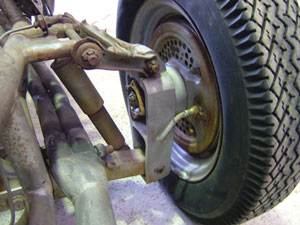
Cast aluminium upright on #2.18 prior to restoration. The drive shafts have been removed. The Fiat wishbone provides the upper link and the rocker arm lower link can be seen. The brake hose has been cut.
Branca used telescopic shock absorbers outboard of the chassis, and conventional anti roll bars front and rear. The front uprights were fabricated and the rears were substantial aluminium castings with stub axles and universally jointed Fiat 600 drive shafts. The cast aluminium uprights were common on all three cars but the other two have transverse leaf rear springs.
Single leading shoe Fiat 1100 brakes were used at front and rear to comply with the regulations. There was freedom on the choice of wheels and Fiat 1100 14-inch steel wheels with 5.60 section tires were mostly used although there is one photo of a car with wire wheels and magnesium or cast aluminum wheels were a common later upgrade.
Branca used a Fiat 600 steering box and a long rigid column to which a Nardi wood rimmed wheel was mounted. The wheel is almost upright but the driving position is very good. The car is comfortable to sit in and visibility is excellent. Instrumentation consisted of a 75mm cable driven tachometer and small water temperature and oil pressure gauges. To the left of the steering wheel was a starter switch and to the right the brake fluid reservoir and a Fiat 600 gear lever connected to the rear of the gearbox by a series of universally jointed rods. The floor mounted pedals are tucked in front of the petrol tank with almost no room for the driver’s feet, and the clutch and accelerator operate through long cables. The brake pedal operates the master cylinder at the front right and the battery is at the front left.
The Fiat 1100 motor is very simply mounted to the chassis on a bar at each side sitting in anti-roll bar split rubbers. The sump is a fabricated steel reservoir with longitudinal cooling tubes.
A standard Fiat forged crankshaft was used and on the engine now in the car there was no evidence of polished connecting rods or special pistons. A heavy cast flywheel was used. The head shows signs of extensive porting and polishing and had the original Fiat water outlet and water pump blanked off and a new water port opened. A cast aluminum rocker cover topped the engine.
The combined inlet and exhaust manifold was fabricated as a single unit to provide a free flowing system with no muffler and the inlet manifold accommodated a pair of sand cast 38mm Weber carburetors. A small steel header tank sat at the rear of the motor. Due to limited space the original Fiat water pump could not be used and a belt driven pump was mounted low to the left of the engine block.
The body is fabricated entirely in 0.6mm aluminium fixed frequently to the chassis using 8mm slotted screws. The front comprises a nose cone, and a removable section over the tank. The sides are relatively simple curved panels again bolted to the frame. The attractive rear section is in a single piece and clips over the rear to be bolted at its leading edge. The engine and carburetor cover are in two pieces clipped to the body with quick release catches. The body is very well made with welds that can hardly be seen and panels that have been worked to a metal finish ready for painting.
In April 1960 Road & Track did a major feature on Formula Junior and Moretti was one of the makes chosen. The photos were almost certainly sourced from Italy and the car is most likely #2.18 as it has the inboard springing on front and rear. The colour scheme and the race number 48 are the same as the car had at Monza in 1959. The U.S.A. agent was J F Rossa. The car was also described in a brochure produced by Branca.
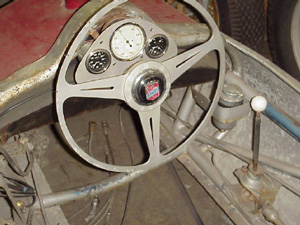
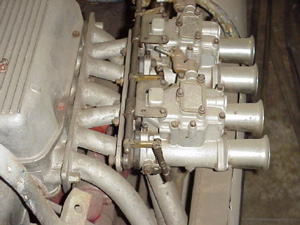
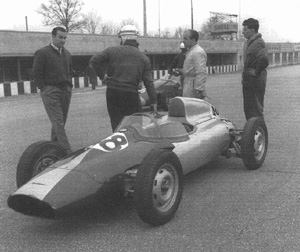
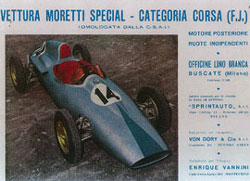
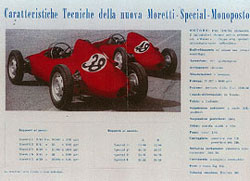

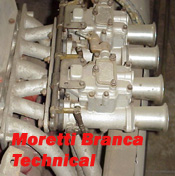
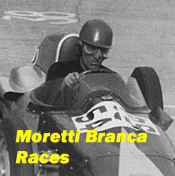
Knut Kolmann owned the Moretti for a couple of years, &, as I recall he had a photo of the car sitting on a pole with a giant fake stuffed armadillo in the drivers seat